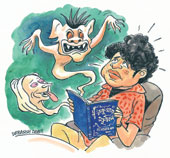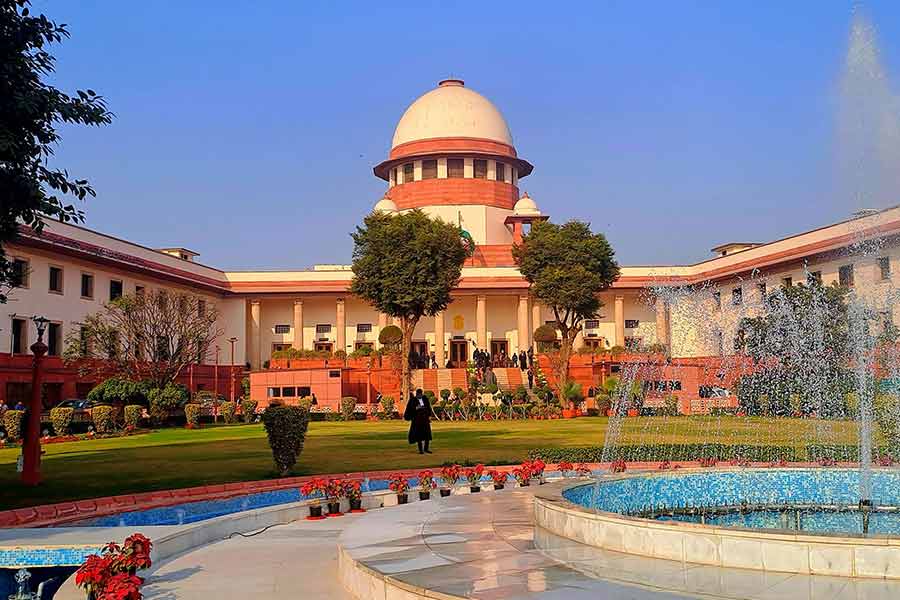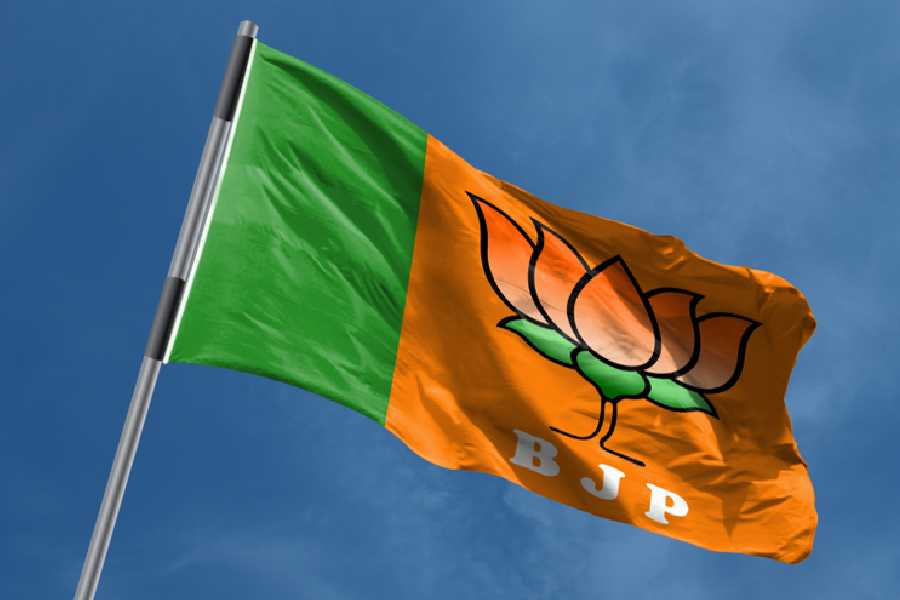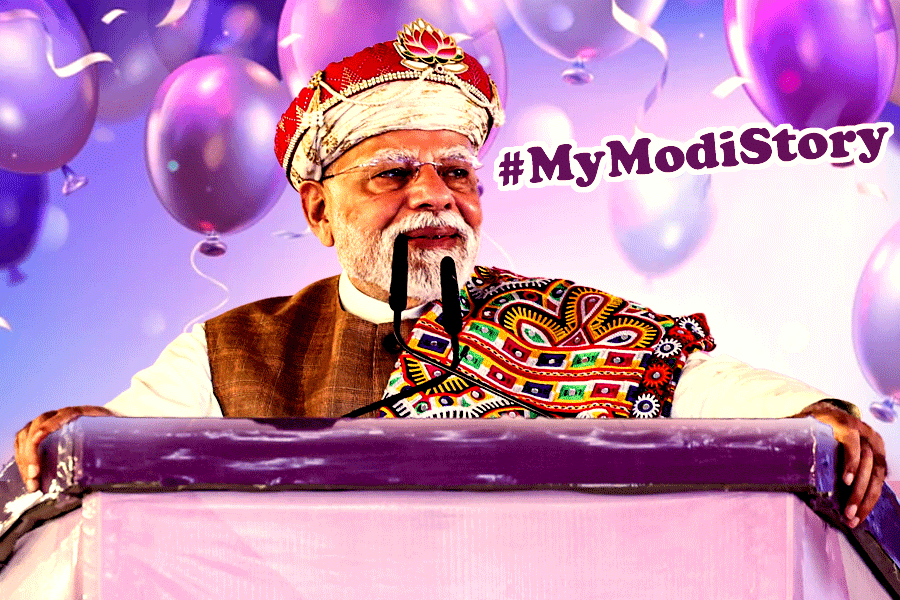 |
Thakumar Jhuli will soon turn 100. That was one more reason to turn to the fairytales that have been a part of the childhood of so many of us.
Picking up the recent edition brought out by Mitra Ghosh Publishers, a reprint of the original edition of 1907, proved that one image from my past was preserved. When I read the stories first, more than three decaes ago, I used to believe the author — and illustrator — of Thakumar Jhuli, Dakshinaranjan Mitra Majumdar, the gentle, white-haired collector of the stories whose photograph also adorns one of the first pages of this edition, was somehow a variant of thakuma. Otherwise there was no trace of the grandmother, the teller of the stories. There is no jhuli either in the delightful woodcuts that bring to life a world of mystery and twilight, where the beautiful is as haunting as the grotesque.
How can one begin to remember Thakumar Jhuli? When did I first learn about har murmuri byaram (bone crunch crunch disease, a sham), or kukurkundali (a contorted canine, a form arising from a stupid Brahmin getting mixed up with a donkey)? How they have become part of the family code, har murmuri a name for a neighbour who pretends to be perennially ill?
But going back, as an adult woman, I was struck most by something else. If grandmother is missing from Thakumar Jhuli — though Rabindranath in his introduction to the book congratulates Dakshinaranjan for being able to capture the inflections of her voice, the nuances of her speech, and the archaic simplicity of her world — the book is bristling with other kinds of women. As with fairytales all over the world — from Hansel and Gretel to Little Red Riding Hood to the Russian Tales of Princess Vassilissa — Thakumar Jhuli is a perilous zone. But here most of the danger comes from the women.
Women here are basically three types: the good woman/queen whom the king banishes wrongfully and who often turns into a ghunte-kuruni dasi (a poor woman who makes her living by carrying cowdung-fuel) or a bird; the princess, demonstrating the classic pose of Rekhe shonar khate gaa, aar rupar khate paa (her body reclines on a golden bed, her feet rest on a silver bed) and the bad woman/ monster woman.
Kiranmala is the only girl who takes care of herself and even saves her brothers. But the bad woman is most fascinating. She does amazing scary things, stands outside the fertility cycle and does strange things to other women’s babies. She is often the five or six elder queens who turn against the youngest, good queen. When the youngest queen delivers a baby — a good woman tends to get pregnant with a son — in Saat Bhai Champa, the six other queens bury the baby in the garbage dump and produce little crawling creatures, rats and crabs, in its place. Seven times. In Arun Barun Kiranmala, the three children are replaced by a puppy, a kitten and a wooden doll at birth.
But the monster is most terrible as the devouring woman. Not all of them need to be Rakshashis. In the first story, Kalabati Rajkanya (which became popular as Buddhu Bhutum when the story was released as a musical on an L.P.), Buddhu and Bhutum, the monkey and owl princes, sons of two good, banished queens, man the dangerous seas, trying to protect their five brother-princes, the wicked sons of the wicked queens. Suddenly three old women appear and gulp the five down with their Mayurpankhi ship. Only Buddhu-Bhutum’s ingenuity saves the day.
The man-eating woman finds the fullest expression in Lalkamal Neelkamal, the first story in the section ‘Rup Tarasi’. She ends up eating her child. Rup Tarasi roughly means a femme fatale, the monster version. Neelkamal’s mother is actually a Rakshashi — most of the monsters in Thakumar Jhuli are Rakshashis, not Rakshashas — who lives as the beautiful queen, unbeknown to the king. She wants to cook Lalkamal’s tender meat with the right spices and eat him. When she can’t have him easy, she gobbles up both Lalkamal, and her own son, Neelkamal, in one of the funniest parts. Her mother also would eat up the two boys, if she did not remember they were her naatis.
Who were the women who actually wrote Thakumar Jhuli, by telling them to their children and grandchildren, in the light of the lamp, or even after it was turned down? When they drew their monsters, were they thinking of their terrible shashuris, and nanads, paranoid about the only wealth they had, their children, especially the boy?
Their imagination turned their homes into kingdoms, them into banished queens and the oppressive women they knew into cannibals. But maybe if they had known the outside world, which is very similar to the inner world, but dominated by another sex, they would know there are as many Rakshashas as Rakshashis.
chandrima@abpmail.com











